Fueling the Tour de France: Inside a Grand Tour Rider’s Gut-Buster Diet
This article originally appeared on Outside
This article was originally published in Velo.
What does it take to fuel three weeks of racing the Tour de France?
Mountains of rice, fistfuls of energy gels, and plates pitifully short of vegetables, that's what it takes.
The 21 stages of this year's Tour de France could see riders like Tadej Pogacar and Jonas Vingegaard pedal through up 80,000 calories-worth of work.
Add to that the metabolic demands of breathing, digesting, and the rest of the body's basic functions, and riders are constantly chasing for a break-even level of energy.
The only way to keep on keel?
Mammoth menus and a fast-flowing stream of carbs.
"These guys look skinny, and they're tiny when you see them for real. But they sure know how to eat. They have huge appetites," EF Education-EasyPost nutritionist Will Girling told Velo.
'Riders Eat a Lot of Rice ... Like, Kilos of it'
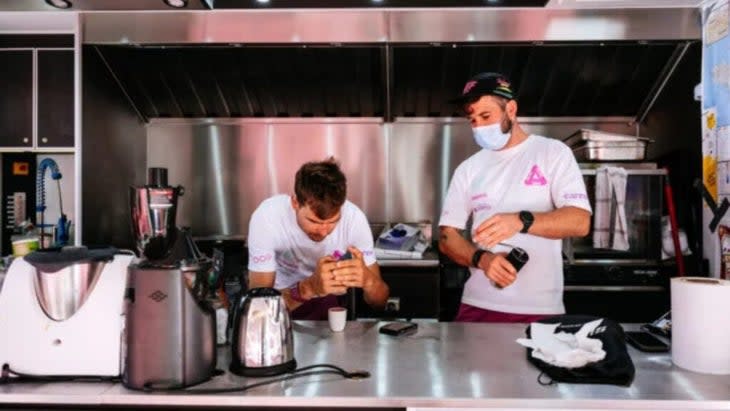
When they're not pedaling or sleeping, riders are probably eating - and it's most likely to be carbohydrates on their plate.
Carbs are the endurance kings of macronutrients, with basic staples like rice, pasta, potatoes, and bread the jewels in their crown.
They're the energy-giving fuels that power bunch sprints and drive mountaintop victories.
And in the modern pro peloton, rice is increasingly becoming the carbohydrate of choice.
"Riders eat a lot of rice ... like, kilos of it. It's sort of boring, but it works," Trek-Segafredo chef Bram Lippens told Velo. "We add sauces like tomato or pesto to keep it interesting, but it is essentially still just rice!"
A rider is never far from their next meal when at a grand tour.
Around three hours before a stage, riders will scarf down a breakfast banquet of rice, eggs, oatmeal, pancakes, and toast.
When riding through stages that can burn as many as 5,000 calories, legs are kept turning via carb-laden drinks, energy gels, bars, and team-made rice cakes. The demands of modern racing require riders to eat as often as three to four times per hour in what is an open pipeline of fuel.
And once a stage is done, a carb-based snack and recovery shake act as a mere stopover before another gut-busting meal in the evening.
The nighttime feast makes for a starchy double-serve that both boosts recovery from the day's stage and refuels for the rigors to come.
"The night before a big race or stage we keep it simple with maybe chicken and rice, or salmon and rice," Girling said. "It's nearly always white rice we serve, because it's so easy to consume and it's low fiber."
The rice-rich diet of the modern Tour de France rider defies the belief that the peloton pedals on pasta.
"Rice is more energy dense than pasta. So for the same volume, you got more carbohydrate from rice. Plus it's gluten-free. So theoretically it's more digestible than pasta," Jayco-AlUla nutritionist Laura Martinelli told Velo.
"Pasta is OK if it's the correct type and cooked properly, and we don't stop riders from eating it. But if I had to recommend one or the other I'd 100 percent always say rice."
High Energy, Locally Sourced
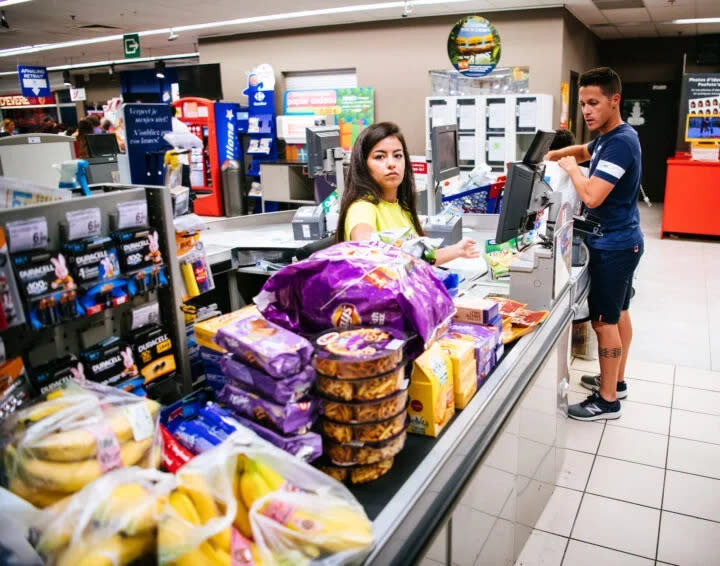
The entourage of any pro team has expanded exponentially in recent decades.
In-house nutritionists and chefs like Martinelli, Girling, and Lippens are now as common as the soigneurs, mechanics, and masseuses that have long had their seats in a grand tour team bus.
Jayco-AlUla staffer Martinelli oversees the diets of Tour-bound riders like Simon Yates, Dylan Groenegen, and U.S. all-rounder Lawson Craddock.
One of Martinelli's daily on-race functions is to plan out what each individual needs to eat, based on the demands of the stage to come. Bodyweights and expected expenditures make part of a series of calculations that ensure riders match the huge energy output of the Tour de France with a similarly staggering caloric input.
For a relatively straightforward sprint stage like this year's seventh stage into Bordeaux, Martinelli's riders would be tasked with taking down around five grams of carbohydrate per kilo of bodyweight.
For the kingmaker mountain stages through the Pyrenees and the Alps, that multiplies up to almost beyond-belief bucketloads of carb. On the Tour's toughest days, a rider like Craddock might force down up to 18 grams of carbs per kilo of his mass.
At around 69 kilograms (152 pounds), the Texan would be facing more than 1,200 grams of carbohydrate over the course of a day's meals, shakes, and on-bike nutrition.
For context, that's the equivalent of around four kilos of prepared white rice or a similar amount of white pasta.
"Toward the final week when there are more big days in the mountains and riders are getting more tired, eating so much can become more difficult," Martinelli said.
"We try to make things easier by preparing energy-dense food and minimizing the total volume. So we choose the most carb-rich sources we have and use carb drinks and smoothies. When a rider is fatigued, they typically find it easier to drink than to eat.”
Professional chefs like Trek-Segafredo's Lippens work out of kitchen trucks or hotel facilities to prepare menus that would be worthy of a five-star restaurant.
Meat, fish, and vegetables freshly sourced from local shops and markets come together with a deep traveling storecupboard to create meals that are about a lot more than just fuel.
"When they're eating so much, we need to maximize the flavors we serve and keep it quite varied. But it needs to be simple at the same time," Lippens said. "Some things like the carbs, we have to serve. But we try to change the sauces, chicken, salmon, whatever as much as we can or riders will lose interest."
The Question of 'Watts Per Kilo'
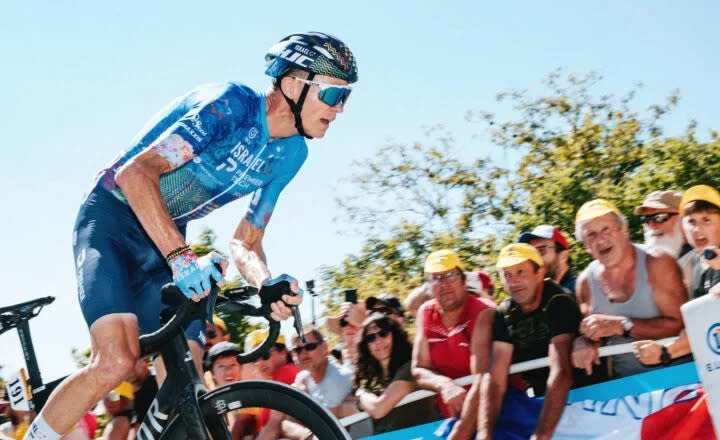
A healthy racer who's following an appropriate meal plan should have both the fuel to recover from the past stages, and the energy to power the days to come, all the while keeping a steady bodyweight.
Riders check their weight on a daily basis and report back to staffers to ensure they're on a level.
Although the watts-per-kilo equation is crucial for climbing speed, lost mass comes at the risk of muscle wastage or hormonal malfunction.
As with sports like running and gymnastics, body mass is a big metric in the pro peloton. And in an environment where disordered behaviors could easily become commonplace, teams use weigh-ins to ensure riders aren't toying with long-term health problems.
"We always would prefer they eat a little more than a little less, within reason," Martinelli said.
Intriguingly, some riders finish a three-week race like the Tour de France heavier than they started.
Younger riders or grand tour rookies might mistakenly over-fuel for fear of getting dropped. Others report water retention resulting from long days of travel or the impact of glycogen storage.
"A bigger rider can gain two to three kilos in water weight, very quickly," Martinelli said. "We can manage that by changing the distribution of when in the day they eat carbohydrates. That should manage their insulin response and prevent more fluids. But it's difficult to get perfect."
Carbohydrate isn't the only thing carefully monitored in the Tour de France diet.
Protein intake is supercharged to help maintain muscle mass and to speed post-race recovery; healthy fats like olive oil, avocados, and nuts are a must-have due to their contribution to hormonal health and vitamin absorption.
There is one food group that does take a hit however.
Fiber is drastically reduced on hard mountain stages or days expected to be particularly intense, such as this Tour's climb-filled grand depart.
The so-called "low G.I. protocol" ensures riders take the next day's start line with empty stomachs and low water weight.
"Before all hard and heavy races, they skip salads and almost all the raw fruits and vegetables," chef Lippens said. "I may put out a few veggies, like just one or two pieces of broccoli. They basically eat like teenagers."
The Booze, Burgers, and Brownies of Balance
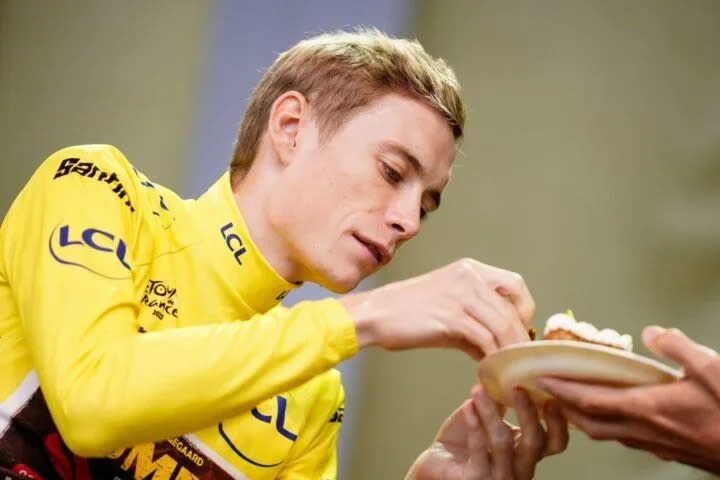
However, the daily diet of a Tour de France racer isn't all carefully calculated carbohydrate quantities and the leanest cuts of meat.
Staffers appreciate the need for balance.
Desserts like brownies, cheesecakes, and fruit tarts are served daily, and the night before a rest day will see teams allow riders to let off some nutritional steam. Barbecues, or homemade pizzas, burgers, or lasagna are cited as the most-frequent pre-rest-day treats served to the multinational peloton.
And, of course, victories are celebrated with something a little more appetizing than another carb drink or high-vitamin shake.
"We're lucky at Jayco-AlUla," Martinelli said. "Our owner [Jerry Ryan] owns amazing wineries in Australia, so we always have good wine with us.
"We mainly have red, but sometimes white. The guys only get one glass, but it's better to have one very good glass rather than a whole bottle of a bad one. The occasional glass - that's recovery for the mind!"
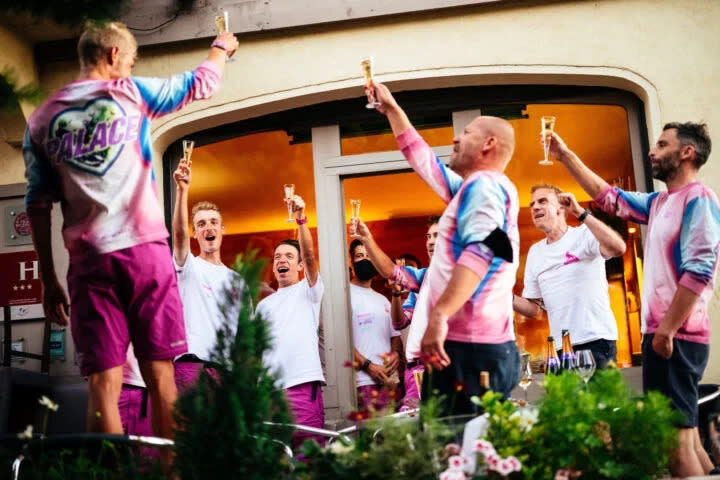
For exclusive access to all of our fitness, gear, adventure, and travel stories, plus discounts on trips, events, and gear, sign up for Outside+ today.

